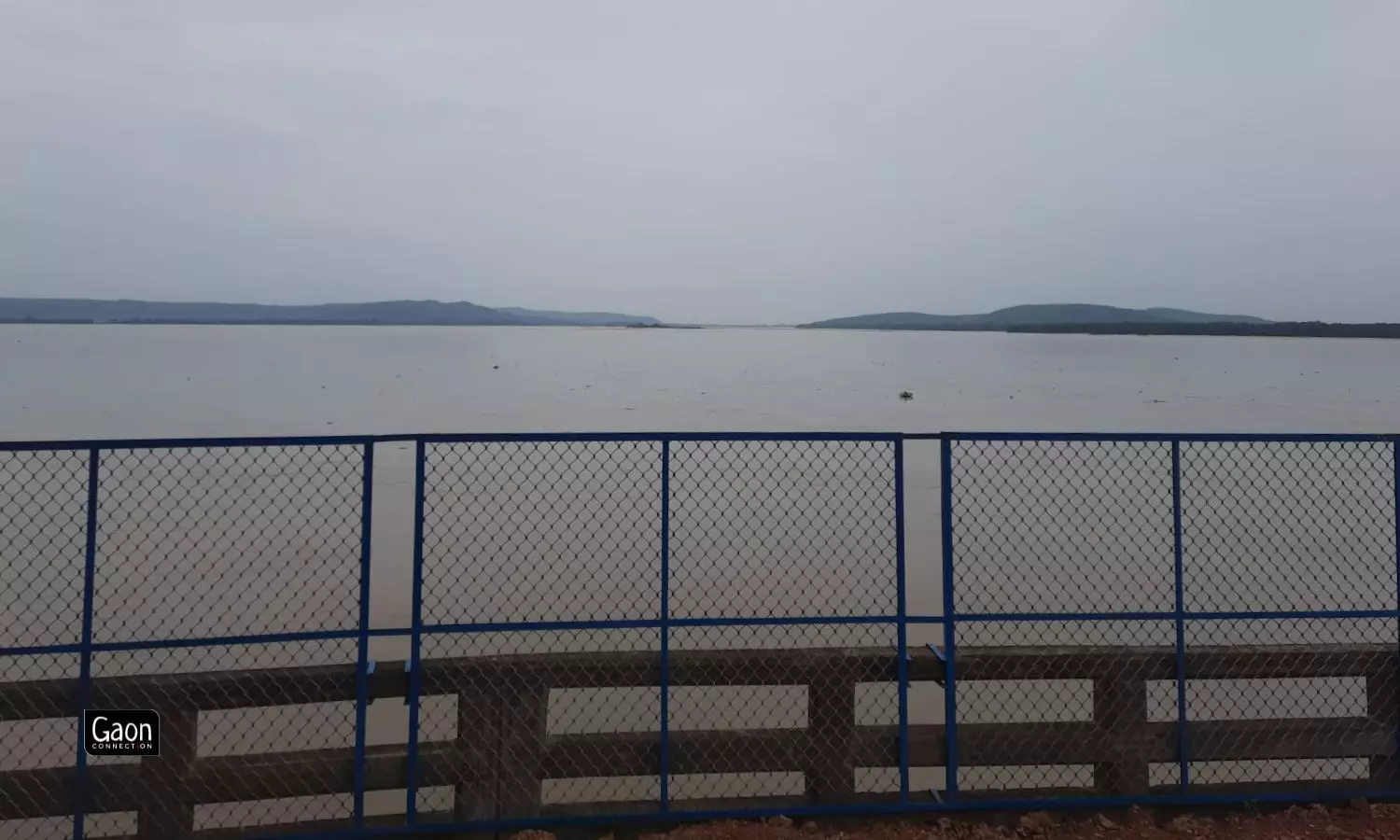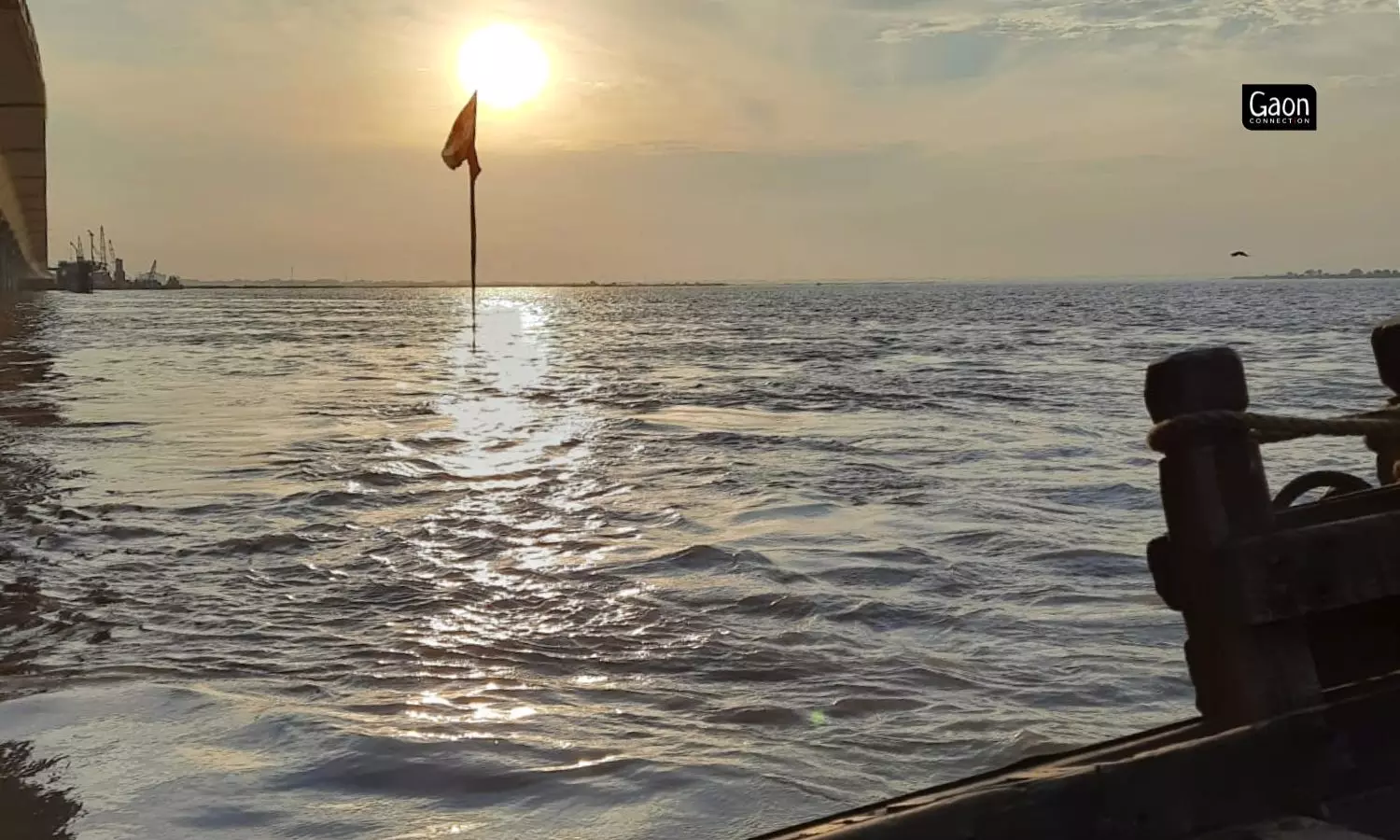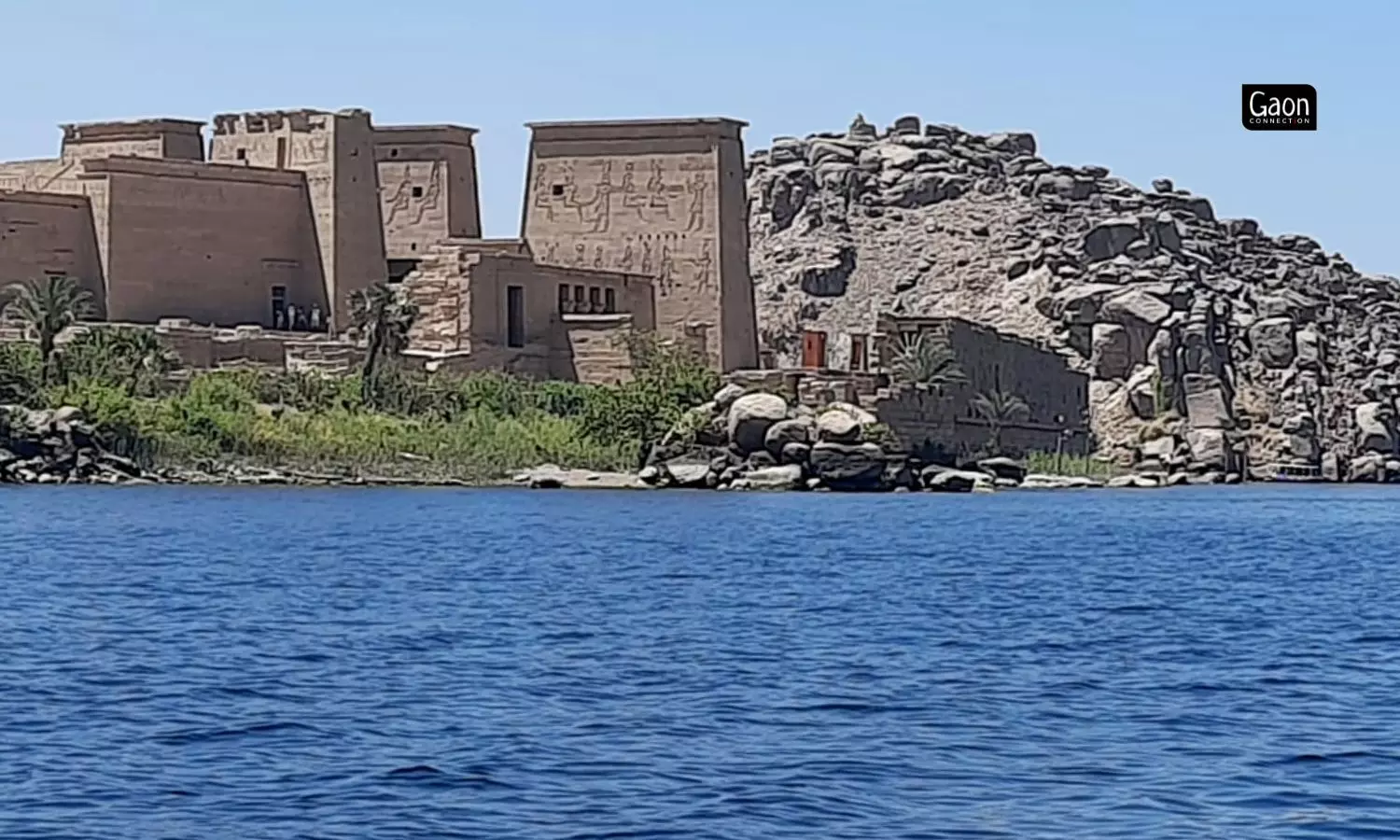I stood and stared at the mighty Mahanadi. We had left Bhubaneswar early that morning for Dhenkanal in Odisha, and on our way, we first stopped to admire the railway bridge across the river then stopped once again at Mundali village to stand and stare as the Mahanadi flowed in all her splendour.
Her waters were not blue. She carries and deposits more silt than any other river in the country, and her rolling waters did look muddy. She is nearly 900 kilometres long, originating in the Eastern Ghats in Chhattisgarh and emptying herself into the Bay of Bengal. But before that the silt and her waters nourish thousands of hectares of agricultural land in the state.

Her waters were not blue. She carries and deposits more silt than any other river in the country, and her rolling waters did look muddy.
Paddy fields painted the banks a bright green as did the many many cashew trees. Pintu Jena, our driver, informed us of a lot more that is grown in the state thanks to the largess of the river. But, he reminded us, the river also strikes terror when she is in spate.
Ganga behti ho kyon…
Watching the Mahanadi flow in its journey towards the Bay, I was reminded of my recent trip (again my first one) to Patna in Bihar where I stood and stared exactly this way, but at the Ganges.
That evening on the Gandhi Ghat at Patna, I couldn’t shake off Bhupen Hazarika’s plaintive Bistirno Duparer…oh Ganga Boicho Keno? Hazarika’s inspiration for the song was born out of his meeting with the great Paul Robeson in America and his song Ole Man River.
Robeson sang about how the Mississippi river was heartless and indifferent to the misery of the African American slaves. I hummed Hazarika to myself as I sat in a creaky damp wooden boat on the Ganga Ji, as the river is addressed with reverence in Patna.
Also Read: The ‘agraharam’ of Kalpathy, Kerala’s first heritage village
A boatman had convinced us to step into the boat. He charged Rs 50 a head, for one trip to ferry us to the other side and then bring us back. There were about 10 of us who got talked into it, which means that for that less-than-an-hour trip to and fro our majhi would have made about Rs 500.

That evening on the Gandhi Ghat at Patna, I couldn’t shake off Bhupen Hazarika’s plaintive Bistirno Duparer…oh Ganga Boicho Keno?
“Welcome to Mini Goa,” the boatman announced as we reached the far shores. Mystified, we looked around and then it dawned on us that there are shacks on the banks there (possibly a diara island inside the river) — was it a picnic spot, or a lovers’ hideout, we wondered.
The ride back was unbearably beautiful with the sun setting on Ganga Ji. The selfies stop for a moment and chatter subsidies to a hush. As if it sinks into our collective consciousness how special Ganga Ji is. How many civilisations have lived, loved and lost on her banks, how much history she has been witness to, how many sages have meditated near her waters and how many storytellers have spun yarns about her…
On that warm darkening evening, in between trying to clamber out of the creaking wooden boat as gracefully as I could in my sari, I thought of other songs Ganga Ji has inspired — Tu Ganga Ki Mauj…from Baiju Bawra; Ganga Meri Maa ka Naam from Tumse Achcha Kaun Hai; Mere Man Ki Ganga…from Sangam, and more…
Notes on the Nile
For me 2023 shall forever be the year of rivers. In June, we sailed on the Nile. It is incredible to think Egypt exists because of this river. Without the Nile, it would just be a vast, unforgiving desert.
The Nile determined the sowing and harvesting time as well as the taxes citizens had to pay depending on how fertile the land had been for them that year. There are Nileometers everywhere, measures chiselled into stone that measured how much the river rose in level or fell.
Also Read: Of trunks, tribes and incredible tales
Without the Nile, there would be no Death on the Nile by Agatha Christie, nor would Elizabeth Taylor and Richard Burton sizzle as Cleopatra and Anthony in the Hollywood extravaganza. Hollywood apart, an entire civilisation flourished on its fertile banks. It still does.

We visited the massive Philae temple dedicated to Isis, Osiris and their son Horus, built in the reign of Ptolemy the second in 280 BC.
Before going to Egypt, my husband and I devoured documentaries on the Nile and there are so many of them, each one more riveting than the other. That three-day cruise on the river was everything that the documentaries had promised it would be.
We saw papyrus growing on the river banks, small boats coming up to the big ships selling kaftans and headscarves, there were birds, donkeys, the Aswan Dam. Our guide grumbled to us that the famed crocodiles were all on the other side, eating up all the fishes. Khaled was annoyed that the big fishes he and his dad caught all those years ago were gone now.
We visited the massive Philae temple dedicated to Isis, Osiris and their son Horus, built in the reign of Ptolemy the second in 280 BC. Stupendously beautiful as it was, the fact that the temple was shifted, block by block to a safer height when after the dam was built, the rising waters of the Nile threatened to submerge it, was mind boggling.
Enough and more has been said and written about the Nile. I shake my head apologetically at the vendors on the small boats, wave to them and get back to Agatha Christie. Now who on earth was the murderer on that cruise boat in Death on the Nile?
Also Read: Making friends with rural India


















